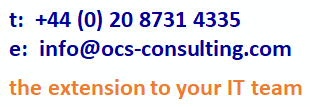The PowerBuilder Road Ahead - PBulletin, May 1999
The PowerBuilder Road ahead...
Sybase's recent re-organisation clearly indicates the company's commitment to make e-business work, and make it work with Sybase tools. The seriousness of this enterprise is further underlined by the release of Enterprise Application Studio 3.0, or, for us, the PowerBuilder community, PowerBuilder 7.0. It provides the functionality and the tools to support businesses' vision of tearing down the wall that surrounds companies' systems and processes (whoever attended any of Sybase's recent presentations will know where that metaphor comes from). Companies will re-invent themselves in a truly customer-centric, flexible way, with IT departments ready to support the business' new demands and the increasing rate of change.
That's as far as the vision goes, but even a superficial examination will raise doubts. The recent avalanche of change visions seems to confirm the rule that we tend to overestimate the rate of short- and midterm change whilst underestimating long-term changes. In particular, companies are currently finishing their Year 2000 Compliance projects, and will invariably introduce a system change freeze, typically between September 1999 and February/March 2000. Thus, they clearly will not invest heavily in new technology that hasn't proved its stability and reliability yet. On the other hand, this slack time will give them an opportunity to consider and re-align themselves, and this re-alignment will inevitably cause them to look towards the Internet and its potential benefits.
I would expect these considerations to be more business than technology oriented. Recent experiences with e-commerce systems explain why: if the business hasn't got a clearly defined set of goals and objectives, then systems enabled by new technology might become counter-productive, rather than a path into new markets and opportunities. And this is where our, that is the PowerBuilder community's, opportunity lies: we have the technology - now is the time to prepare ourselves to use it. We must be in a position to address the new challenges and to help implement businesses' updated visions of where they want to go with technology.
What are the challenges? Do we have to quickly learn how to use Enterprise Application Server and the component generation wizard in PowerBuilder 7.0? Do we have to attend PowerDynamo courses? Well, we might at some stage, but first we have to examine our skills concerning system design. We have to look carefully at our ability to build partitioned applications, even without physically partitioning them. PowerBuilder developers use a tool that has supported object orientation for quite a long time, and does that still much better than most of its competitors. Thus, a lot of PowerBuilder developers already have the skills and the understanding that are required to move to an n-tier architecture. This puts us ahead of a substantial group of people using other 4-GLs. Nevertheless, we should take the opportunity to practise these skills and build applications applying the partitioning principle now: Presentation Layer, Business Logic Layer, Database Access Layer have to become real, not just buzzwords. Even sma ll applications, or rather particularly small applications, should be seen as an ideal chance to exercise what everybody talks about. We have to take the opportunity to prove that the principle works, to improve our experience. This puts us in an ideal position when the critical mass of e-business applications is reached and the demand for capable developers (designers?) increases dramatically. We've got the skills, we've proven the workability of the architectural principles and then we will get the technology, the platform, to implement e-business applications the way it's envisaged today: quick, flexible and with excellent quality to meet the requirements put on applications that will become vital for the business.


